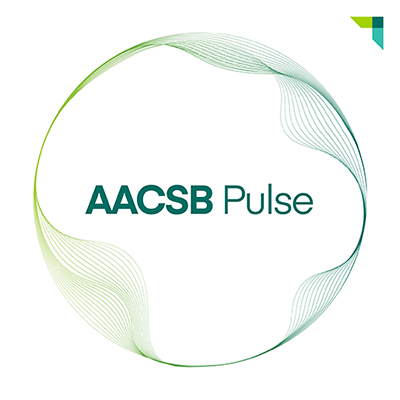How MBA Rankings Are Evolving
- The methodologies of MBA rankings are subject to annual changes. These changes often affect a school's rank more than their performance.
- Prospective students should make sure their goals align with these different ranking methodologies before choosing an MBA.
- AACSB accreditation, which assesses schools against rigorous standards through external reviewers, provides an alternative perspective on program quality and its relevance to employers.
Every year, business schools around the world climb up or tumble down the various MBA rankings. It happens so often that it has become an accepted part of the rankings ritual. And although it’s easy to assume that a school’s performance is the reason behind these changes, it’s not always the case.
That’s because every year, a lot of these MBA rankings make small but influential changes to their methodology. These changes can affect a school’s rank just as much as its performance.
They’re part of the rankings’ ongoing efforts to evolve and keep up with a changing market. Here are some of the most recent changes you should be aware of.
Recent Changes to the Most Popular MBA Rankings
Financial Times
The Financial Times Global MBA Ranking is one of the most popular and comprehensive rankings out there. It rates MBA programs from all over the world using more than 21 different indicators. In 2023, it underwent some significant changes:
- Some indicators removed. The FT no longer measures the ability to speak languages other than English at graduation (1 percent of the total weighting) or alumni recommendations of other business schools (3 percent).
- Three new indicators added. For its 2023 ranking, the FT added three new indicators: quality of alumni network (4 percent), student sector diversity (3 percent), and school carbon footprint (4 percent).
- Less focus on salary. The publication also tinkered with the weighting of almost every other ranking indicator. The biggest of these changes were in salary three years after graduation and post-MBA salary increase, both of which fell from 20 percent to 16 percent of the total weighting.
- More focus on ROI. The weighting for two indicators that try to measure the return on investment of a program—value for money and aims achieved—increased from 6 percent to 10 percent.
This year, the FT wasn’t the only major publication to make changes to its ranking.
U.S. News & World Report
The U.S. News & World Report MBA Ranking is a ranking of the top business schools in the United States. In 2023, it also announced a series of changes to its methodology.
- Increased importance on employment rates and salary. Employment rates at graduation, employment rates three months after graduation, and mean starting salary and bonus all increased in importance this year. Together, they now make up 50 percent of the ranking’s total weighting (formerly 35 percent).
- Less subjectivity. S. News & World Report incorporates two surveys into its ranking: the peer assessment and recruiter assessment. These surveys ask business schools and employers, respectively, to assess the quality of each school in the list. These surveys now make up 25 percent of the total weighting—down from 40 percent last year.
- Change in focus of test scores. The importance of GMAT/GRE scores has fallen, while undergraduate GPA scores have increased in importance.
You may have noticed some similarities between U.S. News and the Financial Times. You may have also noticed a few differences. Let’s dig a little deeper into those in the next section.
How Are MBA Rankings Evolving?
At first glance, the Financial Times and U.S. News rankings seem to be moving in opposite directions. After all, while the Financial Times placed less importance on salary this year, U.S. News increased the weighting of all its salary indicators. But if you dig a little deeper into both lists, they’re actually trying to measure the same thing: return on investment.
This increased focus on ROI is a reflection of two things: the rising cost of business education, and an unpredictable job market.
Although the FT reduced the weighting of salary in their rankings, they did increase the weighting of indicators such as value for money and aims achieved. Together with the new indicator that measures the quality of a school’s alumni network, these indicators are all measures of the ROI of an MBA. It’s the same story for the U.S. News ranking.
This increased focus on ROI is a reflection of two things: the rising cost of business education, and an unpredictable job market. Ultimately, students are looking for an MBA that can provide them with greater certainty in an uncertain world. Rankings are evolving to reflect that.
How Do These Changes Affect You?
So far, we’ve combed through a lot of numbers, a lot of percentages, and a lot of ranking-specific words like weighting and indicator. But what do all of these things mean for prospective MBA students like you?
- A change in a school’s ranking doesn’t necessarily mean a change in their performance. As we’ve seen, many rankings make changes to their methodology every year. These changes are just as likely to affect a school’s ranking as their performance.
- Think about your own goals, and find a ranking that aligns with them. If, for instance, you’re looking for a diverse and international program, it’s likely to place higher in the FT That’s why it’s important to fully understand the methodology of each ranking.
- Look beyond the headline ranking. It’s also important to look at how schools fared in each indicator. Most rankings can be broken down into categories. Your ideal school might be lurking low down in the overall list, but higher up in the indicators you value the most.
Rankings Shouldn’t Be Your Sole Criterion
Although rankings can serve as a reasonable guide as to the quality of MBA programs, they are held back by a few limitations.
The first issue is that the opinions of students and recruiters form the foundations of many rankings. While this can be helpful in some cases, it’s a subjective measure and therefore isn’t necessarily the best way to assess the quality of an MBA.
Even objective measures such as salary and employment rates have their flaws. For instance, the FT ranking only requires a survey response rate of 20 percent for a school to be included in the ranking. This means that in some cases, up to 80 percent of a program’s alumni may not have responded to the survey. Because of this disparity, the numbers around employment rates and salaries can never be 100-percent accurate.
Just 6 percent of schools worldwide hold AACSB accreditation. It is not easy to obtain, and is highly valued by those that do.
In contrast, AACSB accreditation works a little differently. Schools are assessed through an external review of their mission, faculty qualifications, curricula, and ability to provide the highest-quality programs that serve evolving business and societal needs. These assessments are peer-reviewed and regularly updated to ensure schools continue to meet the strict criteria. It’s perhaps why just 6 percent of schools worldwide hold AACSB accreditation. It is not easy to obtain, and is highly valued by those that do. It also signals to employers that graduates of AACSB-accredited schools are prepared to lead on day one.
Just like MBA rankings, AACSB’s methods are constantly changing to meet the demands of the market. By better understanding how both rankings and accreditation work, you’ll be better placed to find the MBA that provides you with the certainty you’re looking for.






